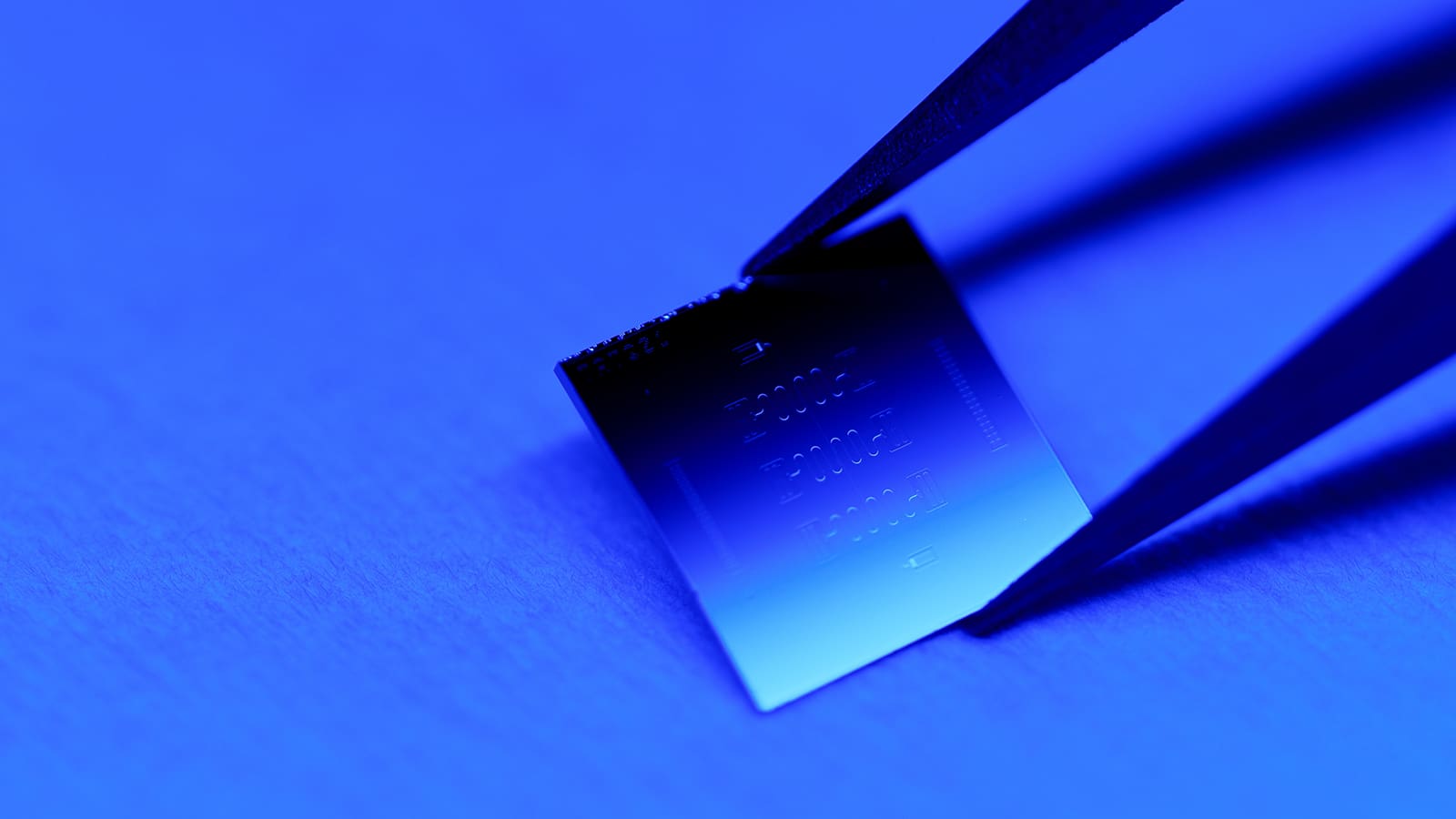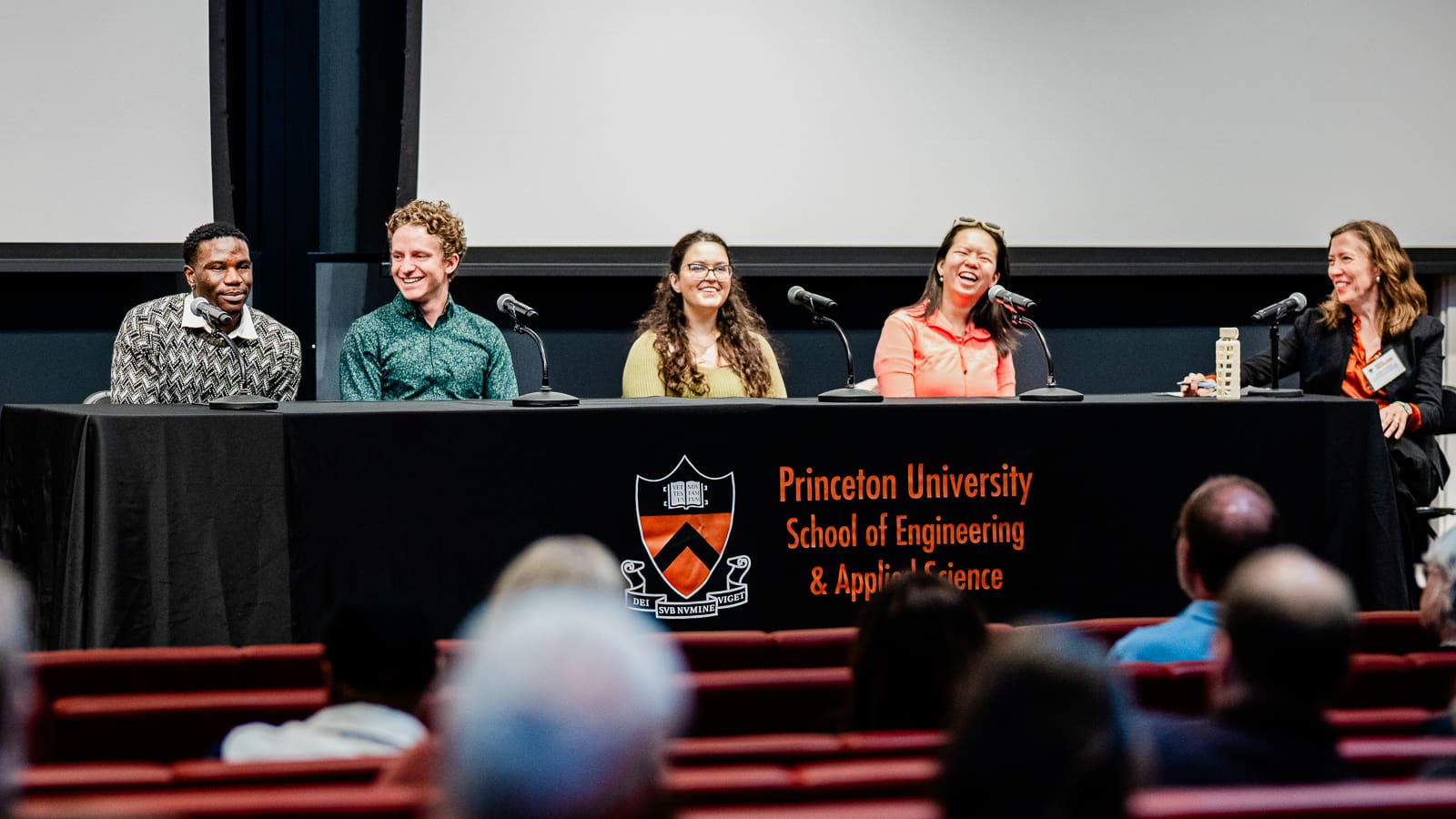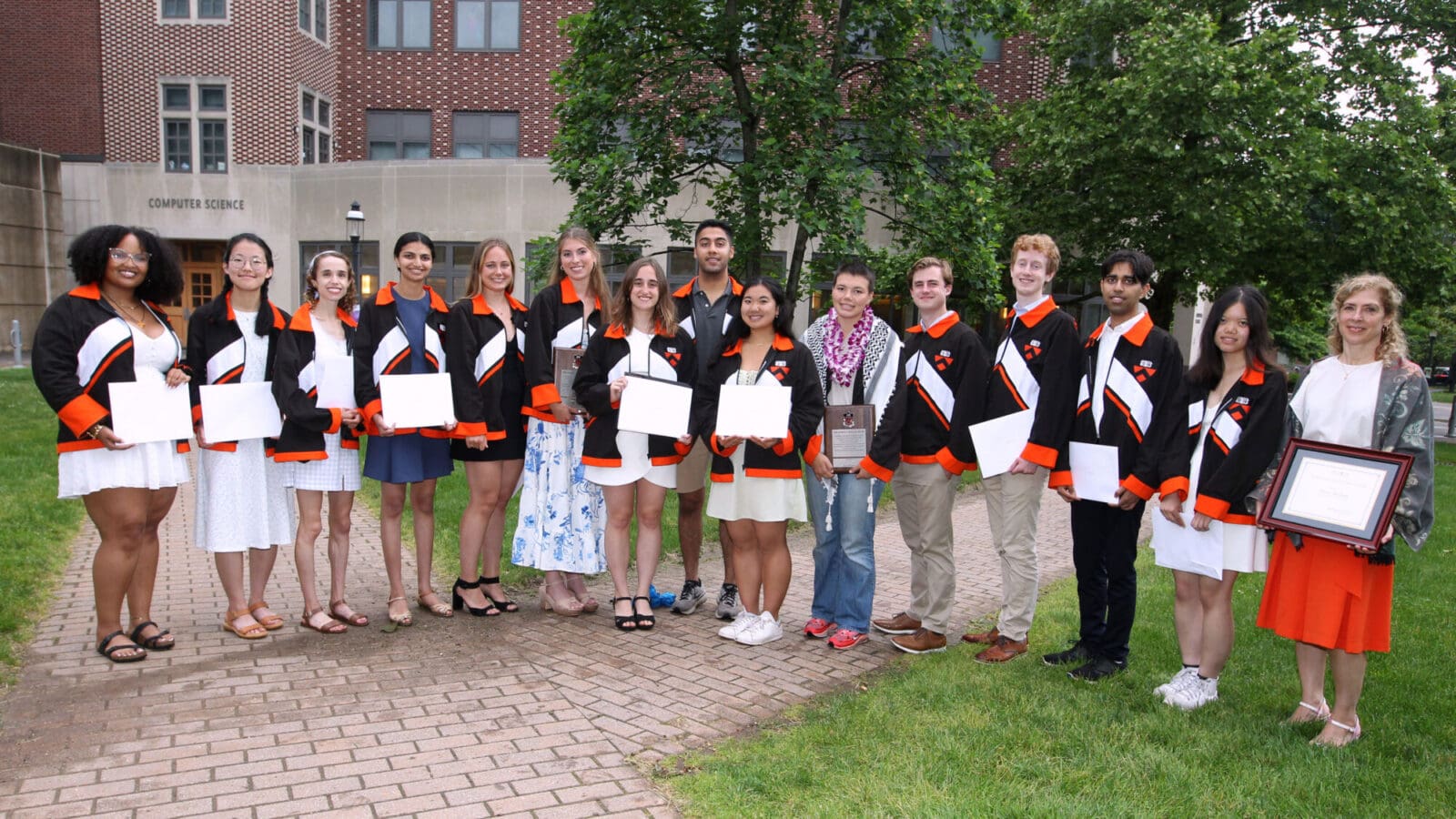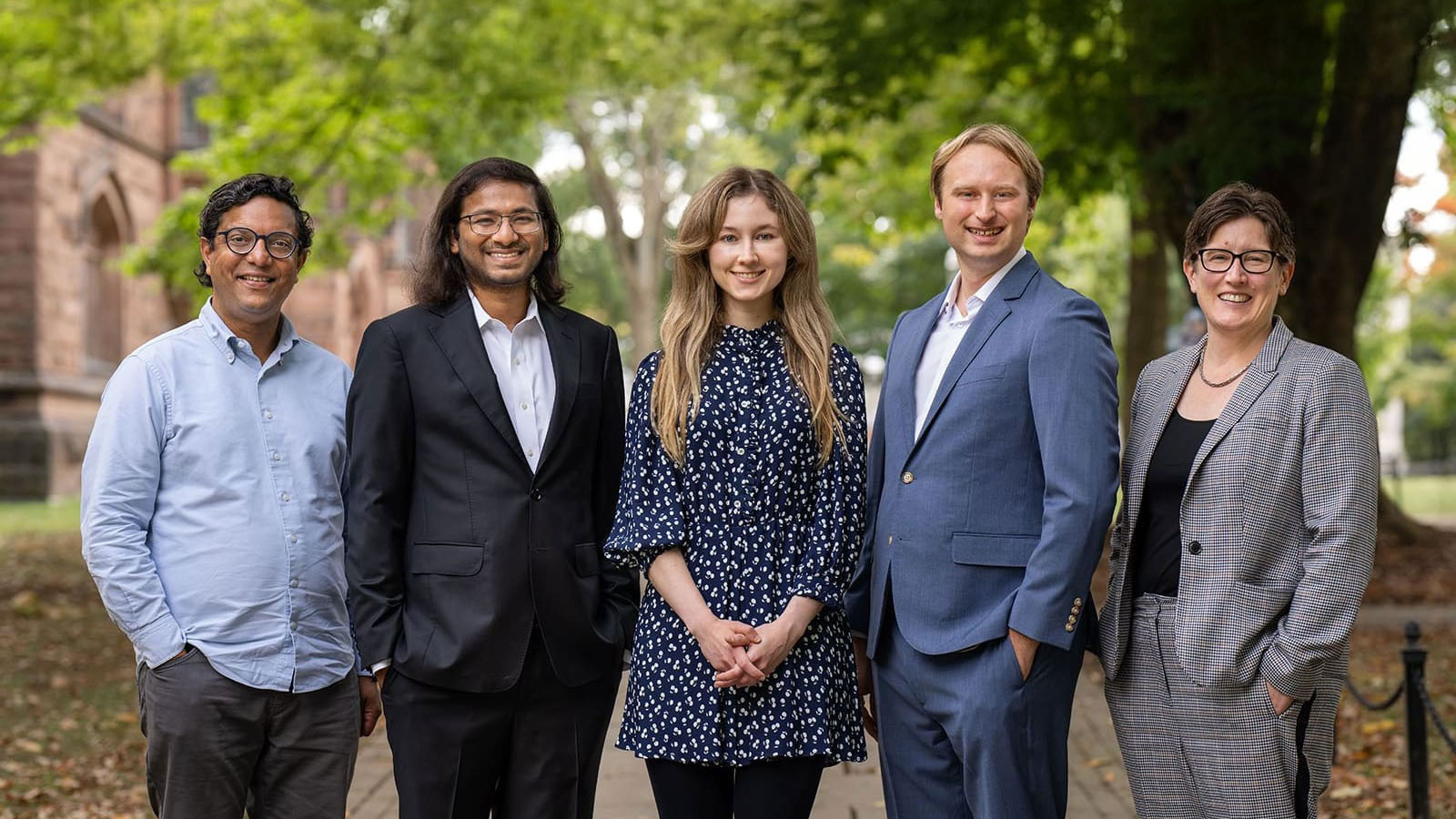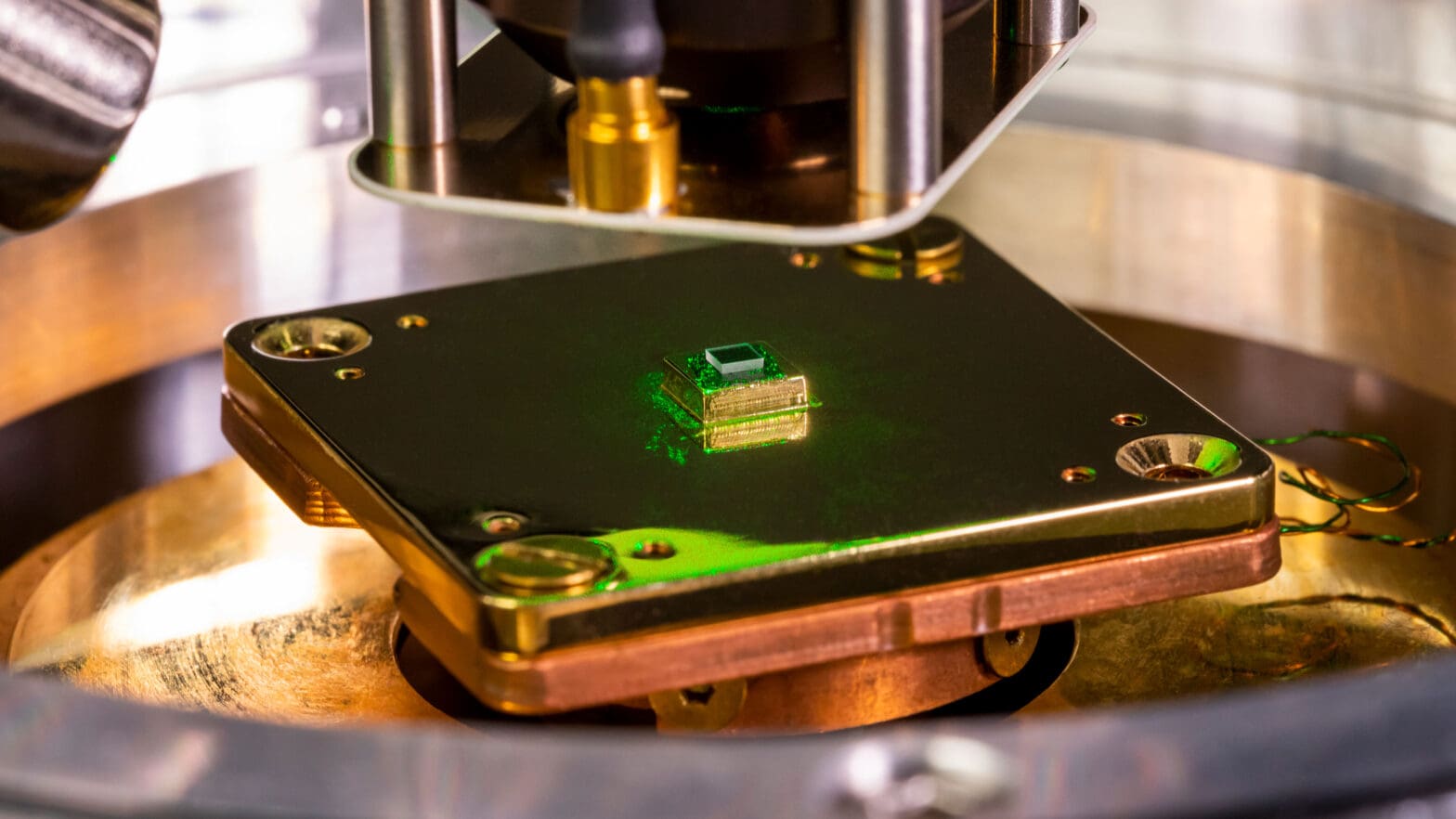
Princeton engineers win major physics prizes
By
on
In addition, the society also honored two members of the physics faculty: Ali Yazdani won the Oliver E. Buckley Condensed Matter Physics Prize, and Frank Calaprice won the Hans A. Bethe Prize. Further information on those prizes is here. The laureates will receive their awards and deliver lectures at a future APS meeting.
Pablo Debenedetti
Debenedetti, Princeton University’s dean for research, won the Aneesur Rahman Prize for Computational Physics, which recognizes outstanding achievement in computational physics research. Debenedetti, the Class of 1950 Professor in Engineering and Applied Science and professor of chemical and biological engineering who has been at Princeton since 1985, will receive the award “for seminal contributions to the science of supercooled liquids and glasses, water, and aqueous solutions, through ground-breaking simulations.”
Debenedetti’s research uses theoretical and computational tools to study a range of questions, such as how ice forms in the atmosphere, how non-crystalline solids such as glass form by rapid cooling of a liquid, how proteins function under extreme conditions, and how water behaves when confined by water-repellent surfaces. His team’s simulations of supercooled water revealed the existence of two distinct forms of liquid water, a finding that helps explain many of water’s anomalies. Most recently, he and colleagues published a study that applied computational chemistry, machine learning, and advanced sampling methods to the challenge of modeling the initial steps of exactly how water freezes into ice. His work has applications in areas ranging from the preservation of pharmaceutical compounds to water desalination and climate modeling.
Find out more on the website of the Office of the Dean for Research.
Nathalie de Leon
De Leon, an associate professor of electrical and computer engineering, won the Rolf Landauer and Charles H. Bennett Award in Quantum Computing for her contributions to experimental quantum information science, especially in “materials discovery and enhancement.” De Leon has pioneered an effort to use diamonds as platforms for quantum technologies. While the cut stones of the jewelry world are typically prized for their beauty, de Leon has shown how to manufacture artificial diamonds with precisely controlled imperfections, sometimes called color centers, that enable researchers to manipulate individual electrons. It’s one of the only quantum information platforms that works at room temperature, rather than the near-absolute zero temperatures of other systems.
Since her 2016 arrival at Princeton, de Leon identified a new color center in diamond that combined long spin coherence times (a key factor for qubit memory) with excellent optical properties, an outstanding problem in the field; she later pointed the way toward using light to control these qubits. She also uses nitrogen-based diamond color centers for nanoscale sensing, a platform with the potential to reveal unprecedented detail in proteins, DNA and other biomolecules. In other research, she and colleagues found that using the metal tantalum in a key part of a circuit produced a threefold extension in the lifetime of its information — the most significant improvement to such a device in nearly a decade.
Find out more on the electrical and computer engineering website.
Pierre-Thomas Brun
Brun, an expert in soft-matter engineering and an assistant professor of chemical and biological engineering, won the Early Career Award for Soft Matter Research for “creative and groundbreaking contributions to make soft functional materials using mechanical and hydrodynamic instabilities, elasticity and flow, from bubble casting for soft robotics to pendant drops coated on the underside of a substrate.”
Brun, who joined the Princeton faculty in 2016, often draws inspiration from patterns found in nature to design new ways to fabricate soft materials. For example, his team has used “bubble casting,” a new way to make soft robots by injecting bubbles into a liquid polymer, allowing the polymer to cure, and then using air to move and bend the resulting soft structure; grown hair-like spindles by spinning a liquid elastic on a disc, not unlike the way sugar is spun into cotton candy, with applications for assembling complex materials; and used capillary action and other principles of fluid flow to herd polymers into printing pixelated sheets of curable elastic polymers that can’t be printed with conventional 3D printers.
Find out more on the chemical and biological engineering website.


